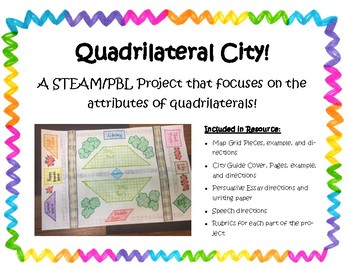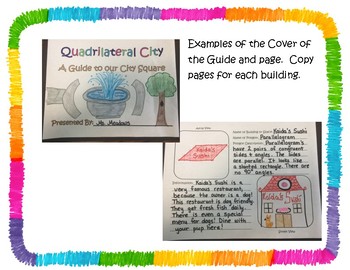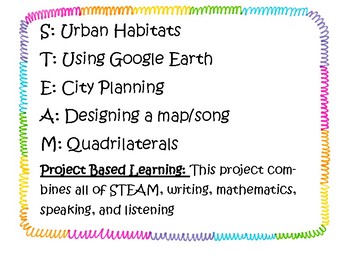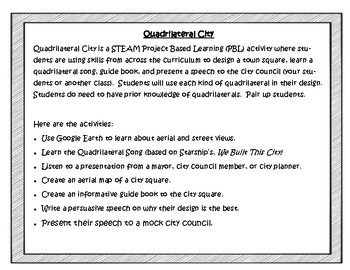STEAM / PBL Quadrilateral City!
- Zip
What educators are saying
Description
Quadrilateral City
Quadrilateral City is a STEAM Project Based Learning (PBL) activity where students are using skills from across the curriculum to design a town square, learn a quadrilateral song, guide book, and present a speech to the city council (your students or another class). Students will use each kind of quadrilateral in their design. Students do need to have prior knowledge of quadrilaterals. Pair up students.
Here are the activities:
¨ Use Google Earth to learn about aerial and street views.
¨ Learn the Quadrilateral Song (based on Starship’s, We Built This City)
¨ Listen to a presentation from a mayor, city council member, or city planner.
¨ Create an aerial map of a city square.
¨ Create an informative guide book to the city square.
¨ Write a persuasive speech on why their design is the best.
¨ Present their speech to a mock city council.
-Quadrilateral Hunt Homework
S: Urban Habitats
T: Using Google Earth
E: City Planning
A: Designing a map/song
M: Quadrilaterals
Project Based Learning: This project combines all of STEAM, writing, mathematics, speaking, and listening





